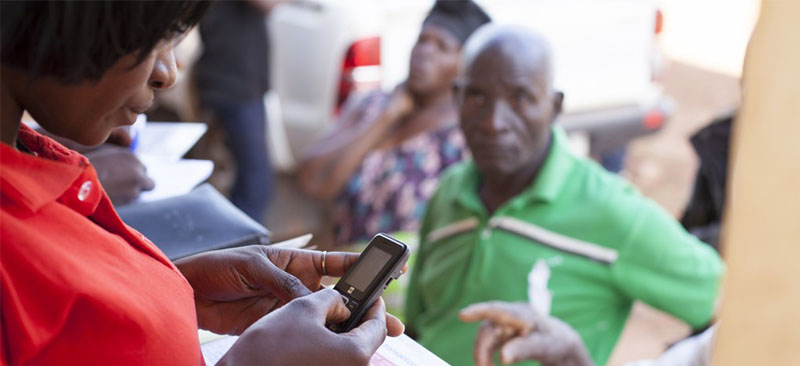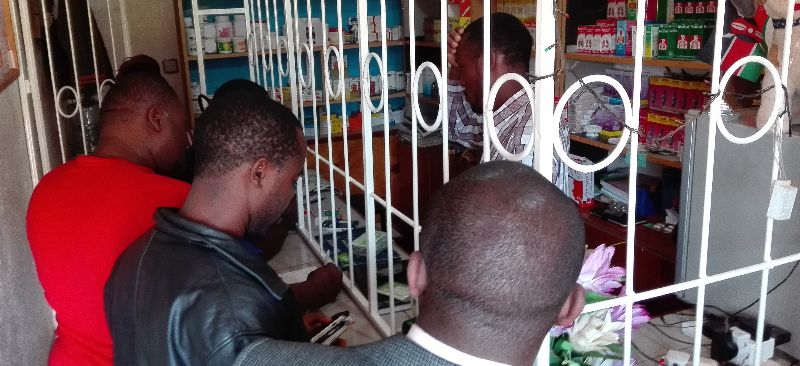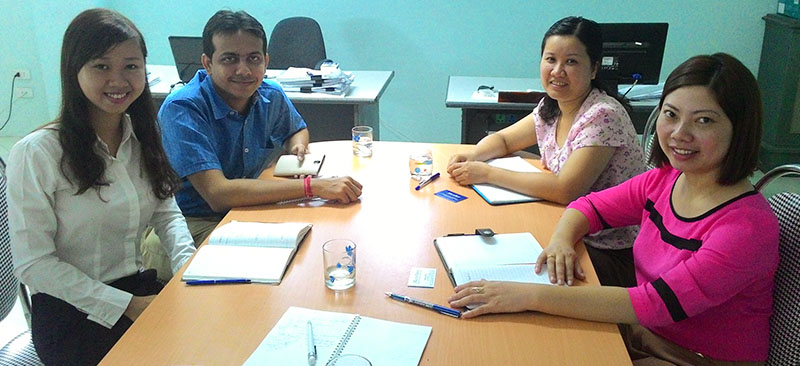MSC has a reputation for fair and independent work and brings a unique and fresh perspective in the form of field insights. We started our pilots on DBT in PDS in Chandigarh, Dadra-Nagar Haveli and Puducherry on the basis of MSC’s findings. We are quite happy with MSC’s engagement with us and have benefitted from the entire process.
Blog
NCAER and MicroSave – DBT Readiness Index
MSC can play synergic role in DBT space. MSC brought significance expertise on financial inclusion and on ground experience gained from assessment of various government schemes and interventions. They helped us in making our study more strong and rich in quality.
Learning from (and about) India´s Emerging Digital Money Grid
 The Government of India has embarked on a remarkable path to connect all its citizens onto a digital platform through which they can, in real-time, confirm their identity, financially transact with anyone else, and store relevant documentation in natively digital format and consent to it being shared digitally with others (for instance, to support credit applications). It presents an opportunity to close the financial inclusion divide in a country that until recently held the largest number of unbanked people in the world. This is linked to a broader e-Government agenda, which has the potential for bringing an unprecedented level of efficiency and transparency into the delivery of a whole range of public and social welfare services.
The Government of India has embarked on a remarkable path to connect all its citizens onto a digital platform through which they can, in real-time, confirm their identity, financially transact with anyone else, and store relevant documentation in natively digital format and consent to it being shared digitally with others (for instance, to support credit applications). It presents an opportunity to close the financial inclusion divide in a country that until recently held the largest number of unbanked people in the world. This is linked to a broader e-Government agenda, which has the potential for bringing an unprecedented level of efficiency and transparency into the delivery of a whole range of public and social welfare services.
What makes the Indian experience so remarkable is that it is such a fundamental departure from what had become the canonical mobile money model in developing countries: that of a powerful domestic player building the ecosystem from scratch, controlling it end-to-end, and harnessing (and fully capturing the benefits of) the consequent network effects.
The Indian authorities have been clear from the beginning that they wanted to prevent the development of a dominated market, so they have based their approach on two key concepts: promotion of interoperability at all levels of the value chain, and provision of certain technical standards and public good service elements by public entities. The ultimate intent is to create a ubiquitous, low-cost network, and that requires focusing on leveraging market-level (rather than provider-specific) scale and network effects.
It´s hard to dispute the Indian motivations, but there are some practical questions that arise:
- In such an interoperable model, where every player can potentially benefit from the actions of other players, will there be sufficient incentives for the deployment of an effective cash in/cash out network – which remains the toughest nut to crack in any digital money network?
- As entities linked to government take on the role of delivering more and more component elements of the digital financial services value chain (e.g. UIDAI, NPCI, CCA, NeGD), what is the right governance model under which they should operate, to ensure that they remain focused on the public interest and not just in promoting their own organizational agendas?
- As the central bank paves the way for much needed new institutional formats and license categories (e.g. prepaid instrument providers, white-label ATM providers, payment banks, small finance banks, etc.), the opportunities for regulatory arbitrage will increase and market access rules may come to seem increasingly arbitrary. As the competitive environment becomes complex, will the authorities be able to keep on top of market practices and ensure that the regulatory framework remains pro-competitive?
- As more of people´s data is digitized, there will inevitably be strong commercial pressures for people to share more and more data in order to be able to access advanced digital services. Beyond the usual privacy protection concerns, how can we place limits on how much data customers have to give up as the price of digital inclusion?
- A number of government initiatives are now starting to show results, just when political support is highest, but providers are often lagging behind for a lack of a clear business case. Is the market near an inflection point, and if not, how will we know when it is approaching it? What will it take for market players to take fuller advantage of the new digital finance public goods? What more can government do to push them?
We think that all digital finance professionals would do well to learn about the Indian experience, and use that to challenge their own thinking about digital financial inclusion models. With this purpose in mind, the Digital Frontiers Institute, of which I am an Executive Director with colleagues David Porteous and Gavin Krugel, has collaborated with MicroSave to create a four-week online course on the Indian journey, which we call Digital Money Grid India, and which we will offer in its first edition starting on March 27th.
The course is intended for professionals in digital money or digital financial services wanting to develop a fuller understanding of the emerging landscape for digital payments and financial inclusion in India. The intended audience includes professionals in India who expect to apply the understanding gained through the course directly in their market, as well as those outside India who want to understand and learn from the Indian model and experience
Agents Count: The True Size of Agent Networks in Leading Digital Finance Countries
This paper lays out a framework for understanding agent network size for digital financial services, drawing a distinction between agent tills and agent outlets. The paper also discusses agent activity rates.
We argue that the number of active agent outlets represents a more appropriate measure of access to finance than agent till statistics, which are usually used by regulators and the industry.
We then propose a simple methodology for calculating active agent outlets in five leading digital finance markets: Bangladesh, Kenya, Pakistan, Tanzania and Uganda. The total number of agent outlets in these countries is roughly half that of agent tills, while active agent outlets amount to just a quarter.
These findings suggest that the use of agent till statistics has led to an overestimation of global access to finance. We also compare the number of active outlets to adult population, customer and agency business data to propose industry benchmarks for the number of agents and customer-to-agent ratios that providers may target. To read through the report, please click here.
Successful Agent Networks
There is no universal definition of a ‘successful’ agent network. Agent networks are a means to an end: providers use them to advance the objectives of their digital financial services (DFS) deployments. There are many different types of deployments, with many different objectives – from upselling mobile network operator’s (MNO) customers on DFS, to decongesting bank branches or building a brand profile. But there is a best-fit agent network for any given deployment. Starting with a clear value proposition and a well-informed understanding of the competition, a DFS provider can build an agent network that drives forward their objectives; objectives that have the right agents in the right places with the right support to build and serve a loyal customer base. In short, there are many types of success. This paper sets out The Helix Institute of Digital Finance system for analysing success in this complex context: a flexible approach allowing agent network managers and researchers alike to measure six dimensions of agent network success, and to categorise agent networks so that we can make fair comparisons between similar deployments. To read through the report, please click here.
Accelerating Financial Inclusion in South-East Asia with Digital Finance
Digital finance presents a potentially transformational opportunity to advance financial inclusion. In this report commissioned by the Asian Development Bank, the role that digital finance can play in accelerating financial inclusion, focusing on four Southeast Asian markets – Indonesia, the Philippines, Cambodia, and Myanmar is discussed.



